Top 10 Most Beautiful Historical Sites in Colombia
Colombia is a diversified country recognized for its beautiful natural attractions, coffee plantations, historic architecture, and vibrant contemporary ... read more...culture, as well as seven Unesco World Heritage sites. We look at the greatest spots to visit in Colombia to learn about the country's culture and history. Let’s check 10 most beautiful historical sites in Colombia below!
-
Cartagena is a city in the northwestern section of the South American continent, on the coast of the Caribbean Sea. If you are wondering where Cartagena is in Colombia, it is the capital of the Bolvar region and is located in the north of the country. Around the city, some various archipelagos and islands are great retreats. Tierra Bomba Island, Mcura Islan, and Bar Island are only a few of them.
Cartagena, known as one of the most beautiful historical sites in Colombia, is a walled seaside city with centuries-old architecture that reflects its rich history. The city, which was founded in 1533, served as a crucial seaport for the Spanish conquerors, making it a prime location for storing goods looted from the native inhabitants. Cartagena was constructed to be one of the most advanced fortifications of the time due to its strategic relevance, which made it a prominent target for pirates and other attacks.
The old town within the walls, as well as the various monuments that stand in and around the city, were both named Unesco World Heritage Sites in 1984. There are also a variety of historic churches and popular monuments to visit, including the India Catalina Monument, Los Zapatos Viejos, and Los Pegasos. If you're looking for something to do in Cartagena, another option is to go to the Naval Museum or the Serrezuela Shopping Center.
Location: Department of Bolivar, Colombia
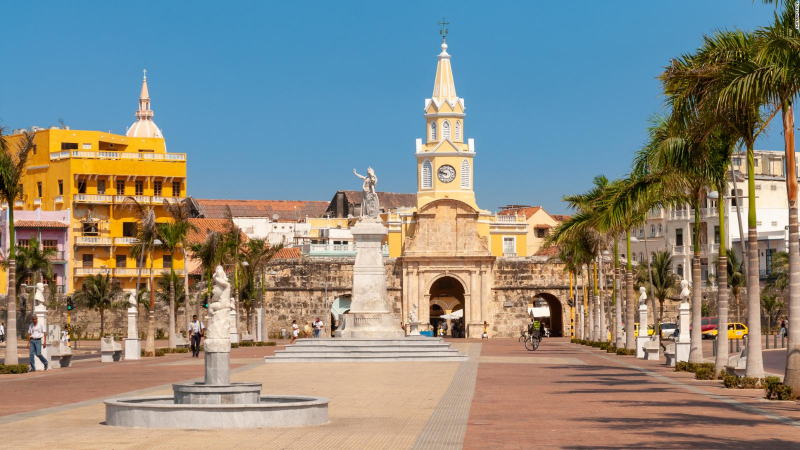
Photo: https://vanhoagiaoduc.vn/ 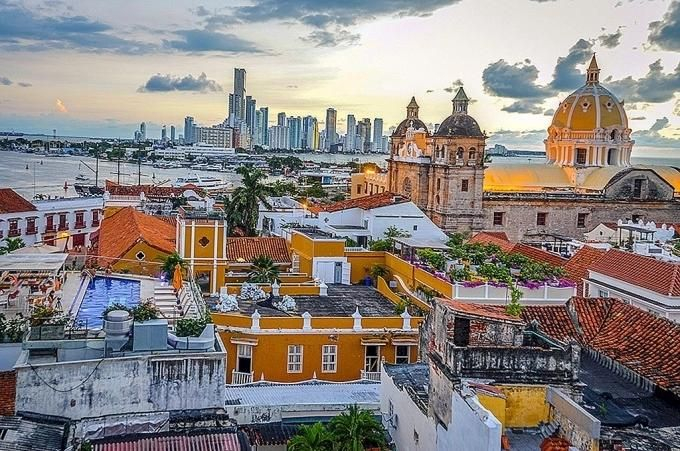
Photo: https://travelmag.vn/ -
Los Katios National Park is a 72,000-hectare park in northwestern Colombia that includes low hills, woods, and wet plains. The park has a high level of ecological diversity, as it is home to numerous endangered animal species as well as endemic vegetation.
Los Katos National Park is rich in biological diversity and plays an important role in the biogeography of the South American continent. These two regions safeguard a representative sample of one of the world's most species-rich areas of moist lowland and highland rainforest, with outstanding endemism, and are next to the much larger Darién National Park of Panama, which is also a World Heritage Site. The park, which covers 72,000 hectares in northwestern Colombia and rises to 600 meters in elevation, is located in the Colombian mountain zone and includes large wetland regions, including the huge Ciénagas de Tumaradó. It is the only area in South America where threatened species such as the American Crocodile, Giant Anteater, and Central American Tapir may be found.
Due to the negative consequences of deforestation, as well as illicit fishing and hunting, the national park has been categorized as endangered since 2009. As a result, eco-tourism activities are not permitted in the park.Location: Turbo, Antioquia, Colombia
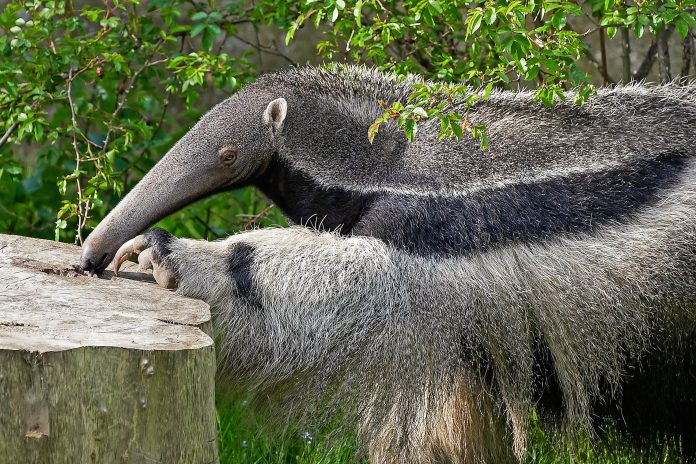
Photo: en/suedamerika/ 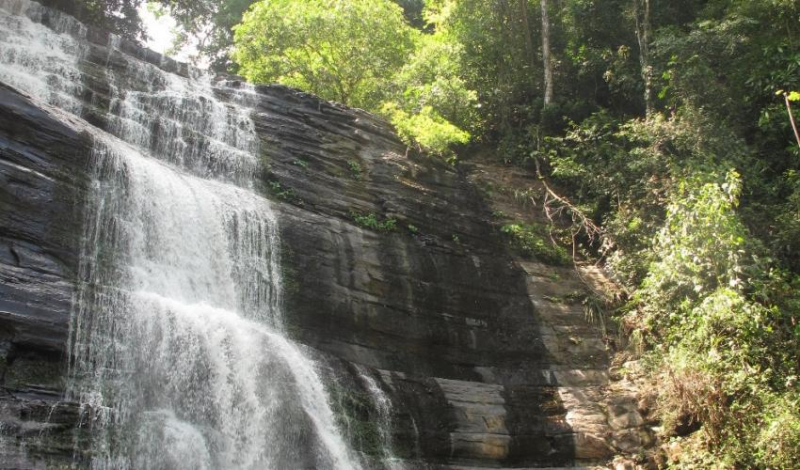
Photo: https://www.iucn.org/ -
Mompox, which was founded in 1540 on the banks of the Magdalena River, was an important part of the Spanish colonization of northern South America. The city grew parallel to the river from the 16th to the 19th centuries, with the main roadway acting as a dyke. The urban landscape's harmony and homogeneity have been preserved in the historic center. The majority of the structures are still in use for their original purposes, presenting an excellent representation of what life was like in a Spanish colonial city.
For its history, colonial architecture, and festivities, Mompox has become a famous tourist attraction. The Mompox Jazz Festival, as well as film festivals, are held each year in the town. Tourism is extremely popular during Holy Week celebrations, which begin on Palm Sunday with a flower and candle march to honor the deceased and are followed by a variety of other religious events and ceremonies. Mompox is a prominent religious tourism destination in Colombia because of all of this, as well as its complex ecclesiastical places.
The city's timelessness stems from the city's exceptional architectural preservation, which dates back to the 16th century, and the fact that many of these structures are still in use for their original function. The church of Santa Barbara stands out as one of the city's features, surrounded by several squares and colonial architecture.Location: Bolívar, Colombia
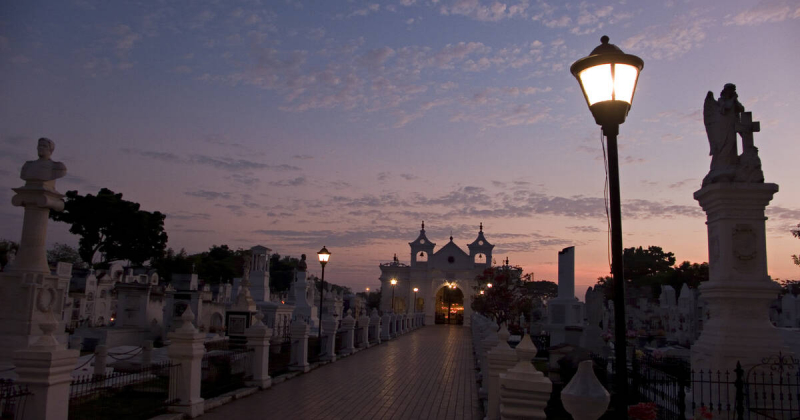
Photo: https://whc.unesco.org/ 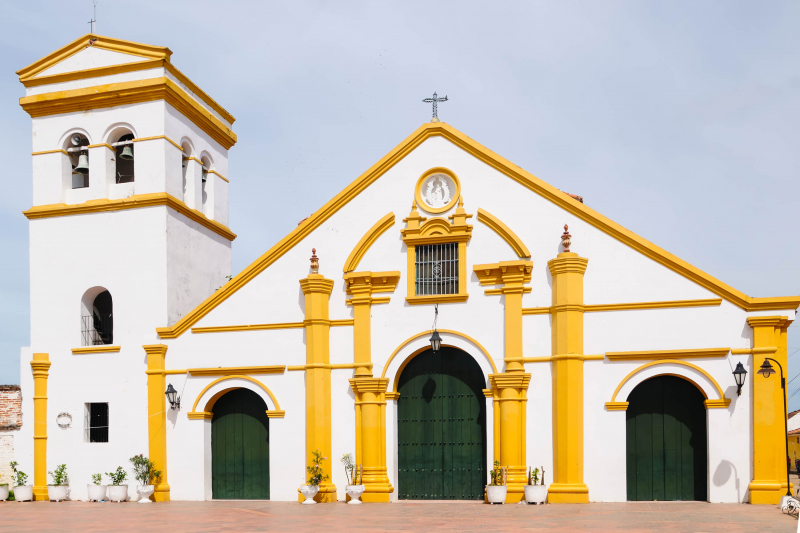
Photo: https://franks-travelbox.com/ -
Tierradentro National Archaeological Park is well-known for its pre-Columbian hypogea, which have been discovered in different excavations and archeological sites.
The traditional hypogeum features a west-facing entrance, a spiral staircase, and the main chamber that is normally 5 to 8 meters below ground level, with several smaller rooms surrounding it, each containing a body. Geometric, anthropomorphic, and zoomorphic patterns in red, black, and white are painted on the walls. Due to grave robbery before the hypogea were designated as protected places, only a few statues, pottery shards, and fabrics can be observed.The park features many hypogea dating from the 6th to the 10th century, as well as some monumental statues of human beings. The interiors of these massive underground tombs (some burial chambers are up to 12 m wide) are painted with patterns that resemble the interior decor of medieval residences. They shed light on a pre-Hispanic society's social complexity and cultural wealth in the northern Andes.
The National Archaeological Park of Tierradentro provides a window into the lives and culture of the inhabitants before Spanish colonialism, allowing visitors to delve further into Colombia's rich past. The park, which is located in Colombia's Cauca province, contains many intact hypogea (subterranean chambers) that are filled with engravings and artifacts that depict social and cultural aspects of life from the sixth to ninth centuries. These unearthed treasures are one-of-a-kind in terms of size and architectural complexity, with enormous rooms, curved walls, and even staircases.
Location: Inza, Cauca, Colombia
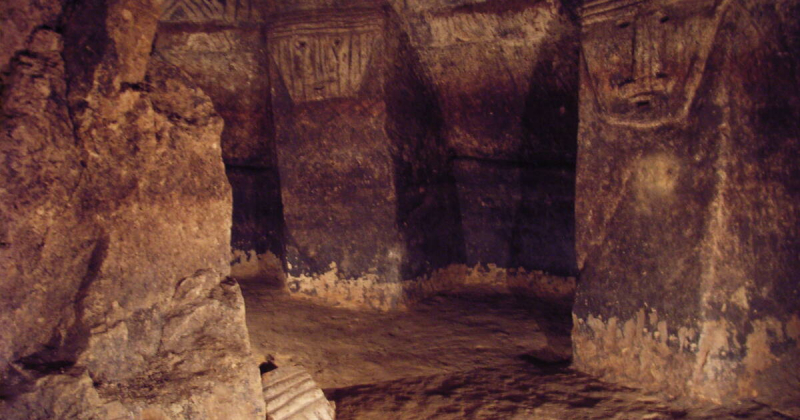
Photo: https://whc.unesco.org/ 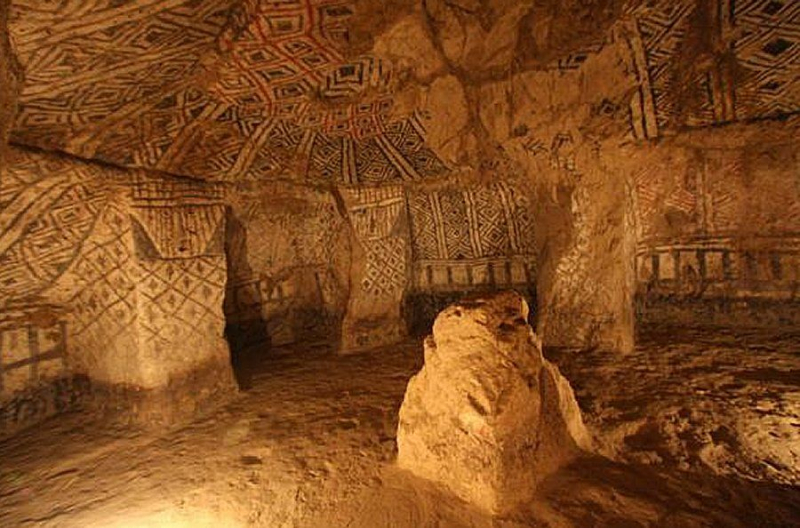
Photo: https://www.pinterest.com/ -
Famous for one of the most beautiful historical sites in Colombia, in Huila, the San Agustin Archaeological Park houses hundreds of carved stone figures dating back thousands of years. These statues are excellent exhibits of the residents' inventiveness and artistry before they left in the eighth century.
The San Agustin Archaeological Park is located in the Colombian Massif of the southwestern Andes of Colombia, on the terrains of the towns of San Agustin and Isnos, in the department of Huila. The Archaeological Park is made up of three different properties totaling 116 ha: San Agustin (which includes the Mesita A, Mesita B, Mesita C, La Estación, Alto de Lavapatas, and Fuente de Lavapatas sites), Alto de los Dolos, and Alto de Las Piedras. The park is located in the heart of the San Agustin archaeological zone, which includes the world's largest pre-Columbian megalithic funerary monuments and statuary, as well as burial mounds, terraces, funerary structures, stone statuary, and the Fuente de Lavapatas site, a religious monument carved into the stone bed of a stream.
The sculptures, which were inscribed as a world heritage site in 1995, reveal religious, aesthetic, and technological components of this ancient culture.
Location: San Agustín, Huila, Colombia
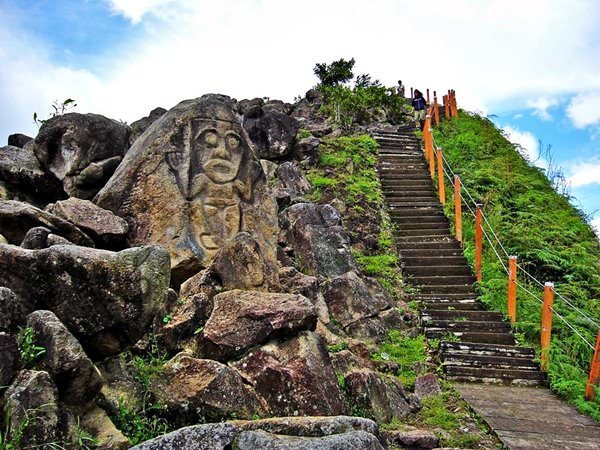
Photo: https://www.orangesmile.com/ 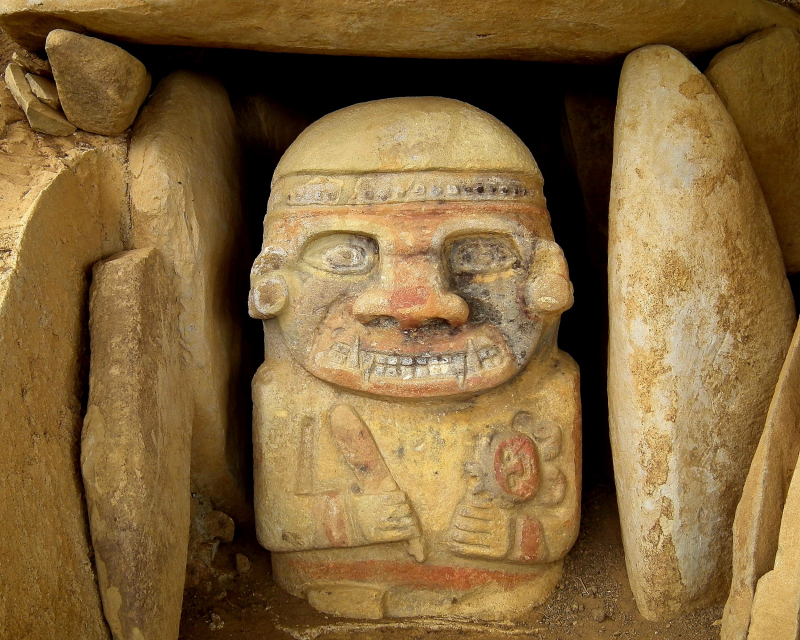
Photo: https://theculturetrip.com/ -
The largest no-fishing zone in the Eastern Tropical Pacific, Malpelo Fauna and Flora Sanctuary is a Unesco-listed area that is home to a number of endangered marine species. The sanctuary includes Malpelo Island and its surrounding waters, renowned as one of the best diving spots in the world. Home to rare and endangered species, Malpelo is recognized as a vital component of the biodiversity in the area.
The Malpelo Fauna and Flora Sanctuary is a huge marine protected area located 500 kilometers off the coast of Colombia. The desolate Malpelo Island and its rocky outcroppings, which cover 35 hectares of land, constitute the highest elevation of the massive submerged Malpelo Ridge. Despite its tiny size, the island is thought to play a significant role in the reproduction of a variety of marine species.
Widely recognized as one of the top diving sites in the world, due to the presence of steep walls and caves of outstanding natural beauty, these deep waters support important populations of large predators and pelagic species (e.g. aggregations of over 200 hammerhead sharks and over 1,000 silky sharks, whale sharks and tuna have been recorded) in an undisturbed environment where they maintain natural behavioral patterns.
Location: Malpelo island, Colombia
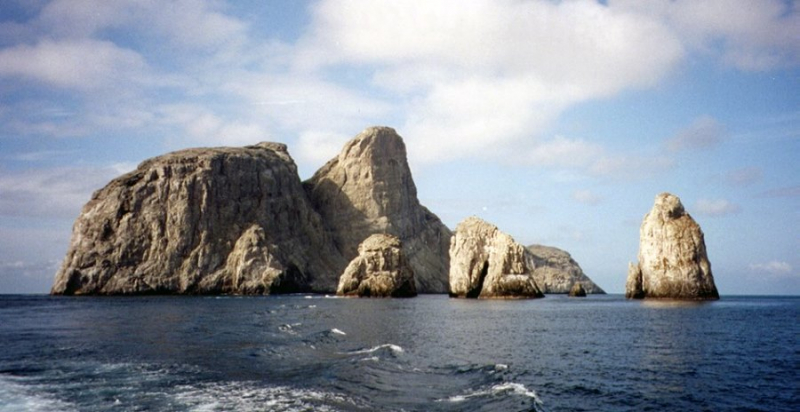
Photo: https://elturismoencolombia.com/ 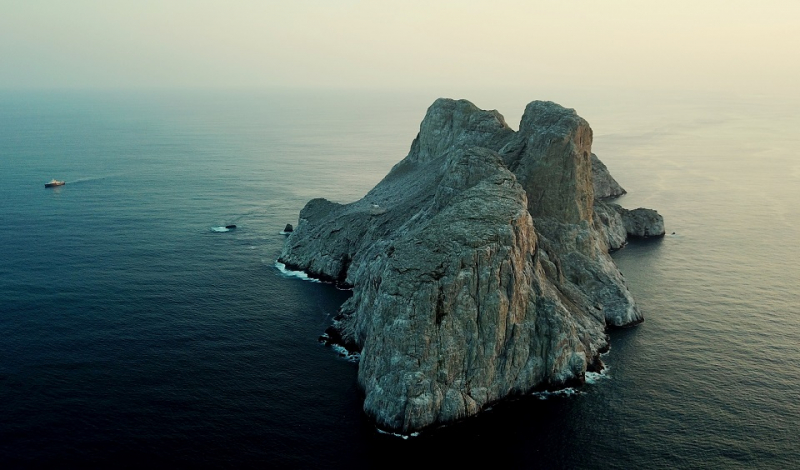
Photo: https://www.iucn.org/ -
Caldas, Risaralda, and Quindio are the three Colombian departments that make up the Colombian Coffee Triangle, often known as the Coffee Zone or Coffee Belt. This region is well-known for producing the majority of Colombian coffee, which is sometimes regarded as the greatest in the world. It's also just a lovely area to visit.
In the Coffee Region, there are many lovely places to explore and many sights to view, but there are a few experiences that stand out. The delightful tiny town of Salento in the Quindio region is arguably the most popular destination in the Coffee Triangle. Salento has already established itself as a must-see destination on the Colombian tourist circuit, thanks to its colorful traditional architecture, excellent range of eateries, and coffee tours. The neighboring Cocora Valley climb is also popular – a gorgeous trail through the mountains that travels past farmland and cloud forest before arriving at a bizarre valley full of the world's tallest palm trees.
Colombian coffee is known for its high quality and flavor all over the world, and the preservation of this plantation-filled terrain is critical to its long-term viability. Even non-coffee drinkers will be impressed by the Coffee Triangle's expensive coffee plantations, antique architecture, and breathtaking mountain top views.
Location: Colombian departments: Caldas, Risaralda and Quindio
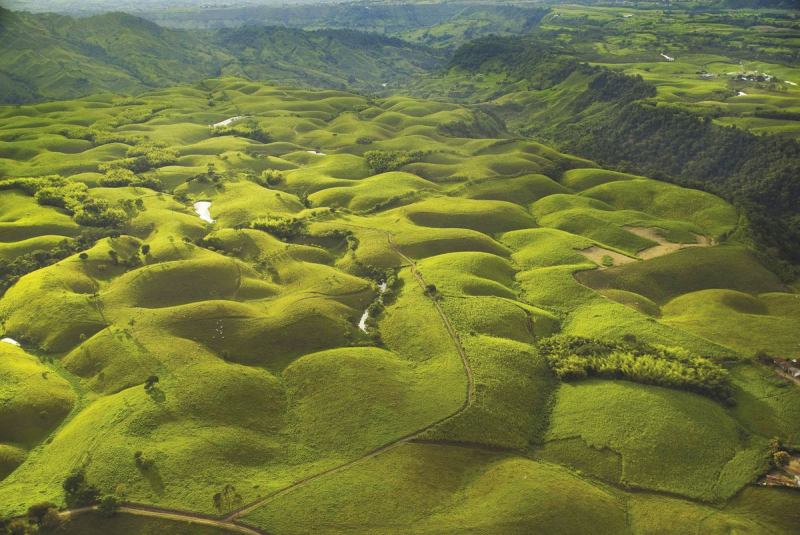
Photo: https://www.bloomberg.com/ 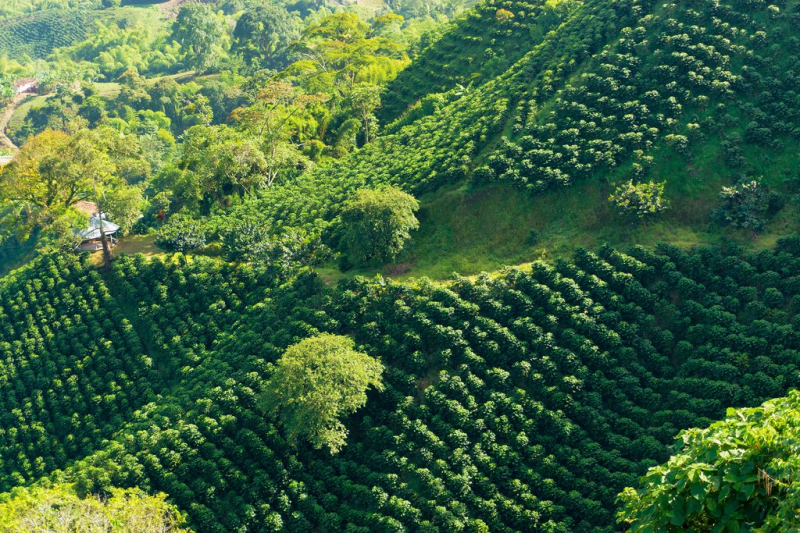
Photo: https://www.kimkim.com/ -
Tayrona National Park is a refuge of natural beauty on Colombia's coast, close to the city of Santa Marta. As a beautiful historical site in Colombia, visitors will be able to see the meeting of beautiful beaches and thick rainforests, which forms a unique environment. Many park trips include a visit to the ancient remains of Ciudad Perdida.
One of the park's borders is Taganga. The Piedras River marks the opposite side. Tayrona National Park is home to around 100 mammal species and 300 bird species. If you go for a swim in a river or the ocean, you might witness one of the over 30 species of reptiles or some of the over 400 species of fish. While strolling along the tropical beachfront, some of the nearly 800 plant types will provide shade from the sun.
In around an hour or so, you may walk to the coast from the park's entrance and be at a camp in three hours. There are campsites where you can rent hammocks or tents. Tayrona National Park may be explored in one night.
Ciudad Perdida, which translates as "Lost City" in Spanish, is considered to have been founded around 800 CE, more than 500 years before Machu Picchu. Surrounded by trees, these ancient remains exude a sense of mystery and grandeur – and tell the story of a bygone era.
Location: Santa Maria, Colombia
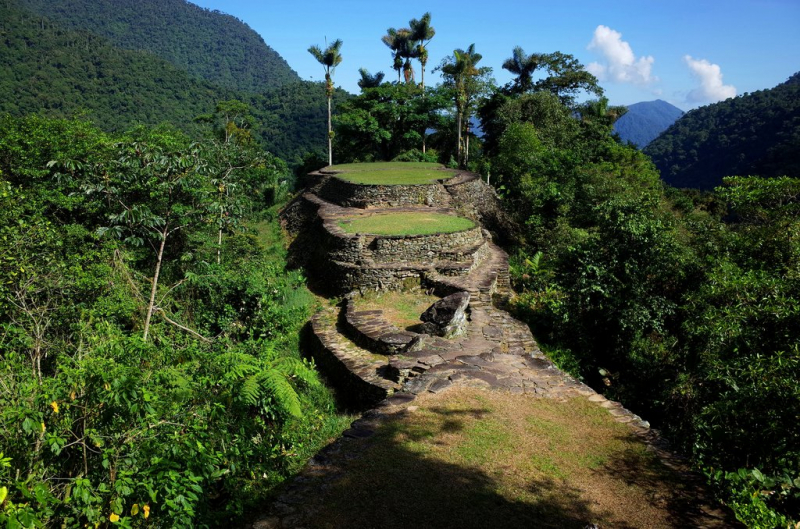
Photo: https://www.kimkim.com/ 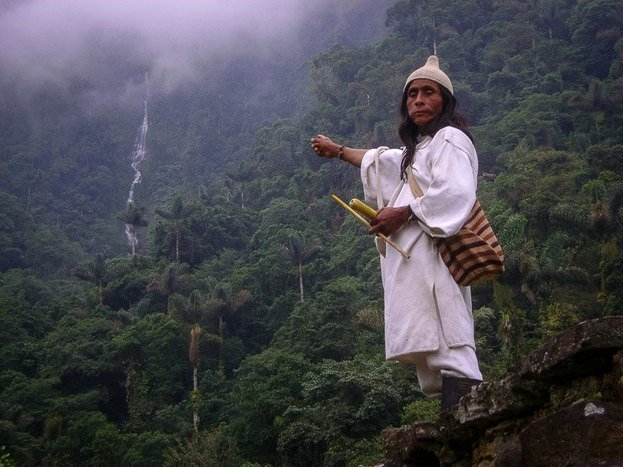
Photo: https://www.kimkim.com/ -
Gorgona Island, about 50 kilometers (31 miles) off Colombia's west coast, has a long history, with its unusual position and geography being used for a variety of purposes over the years. The first trace of human habitation was discovered in 1300AD.
The island's natural wealth includes 147 bird species, over 100 insect species, over 500 marine fauna species, and hundreds of marine and terrestrial flora species. Tourists can see dolphins, porpoises, cachalots, sharks, sea wolves, and even yubarta whales, who come to the Colombian Pacific to give birth to their young from October to November. Divers may enjoy a multi-colored display thanks to the island's massive coral reef.
From 1954 until 1984, it was owned by the indigenous Kuna people, Spanish rulers, pirates, Colombians, and even the English. It also served as a prison. It is currently a national park with a diverse range of fauna and waters that are well-known for scuba diving.
Electrical appliances such as stoves and hair dryers, alcoholic beverages, sprays, and other contaminants, arms, and articles for hunting or trapping animals should not be taken, just as they should not be taken in any other natural reserve.
Location: Guapi, the Cauca area of Colombia, in the Pacific Ocean
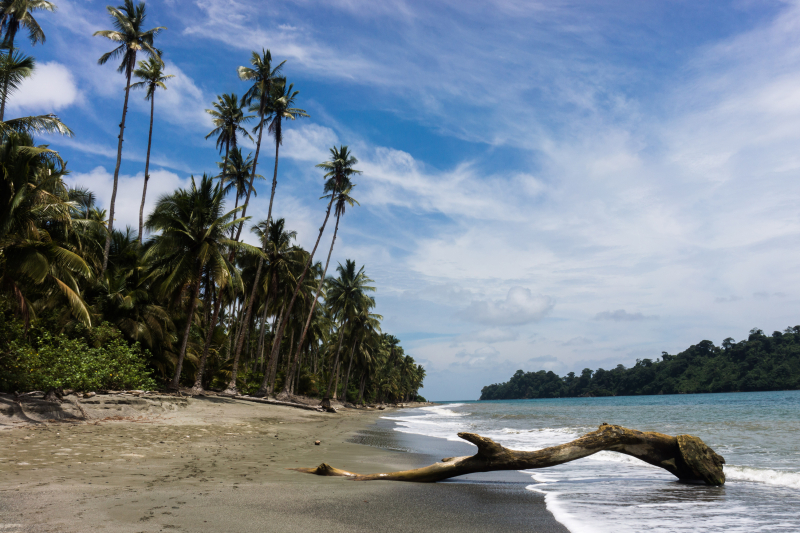
Photo: https://www.npr.org/ 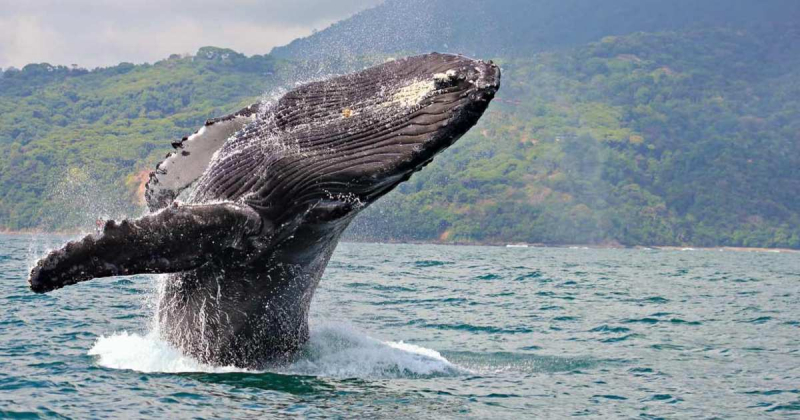
Photo: https://www.cityexpress.com/ -
The history of the monastery is as fascinating and at times troubling as the views are gorgeous. In a dream, the Virgin Mary is said to have appeared to Friar Alonso de la Cruz Paredes and commanded him to establish the convent atop the hill overlooking Cartagena.
The Convent of Santa Cruz de la Popa, located at the highest point of Cartagena, has an outstanding interior that is only rivaled by the panoramic views of the city. The monastery, which began as a modest wooden church in 1607, today contains an image of the city's patroness, La Virgen de la Candelaria. A statue of a martyred local priest, who was assassinated for attempting to propagate Christianity, stands outside. The switchback road snaking its way to the summit of the hill is not accessible by public transportation, and trekking up is not recommended due to the harsh weather. Take a taxi and haggle for a lower fare.
The Convent of Santa Cruz de la Popa may be seen from practically anywhere in Cartagena, as it stretches up Mt. Popa, a 150-meter peak. The hill acquired its name from its resemblance to a ship's poop deck. The monastery is currently open as a religious museum, after four centuries of variegated history. You can obtain the best panoramic views of Cartagena and its beaches from the top of Mt. Popa.
Location: Cartagena, Bolívar, Colombia
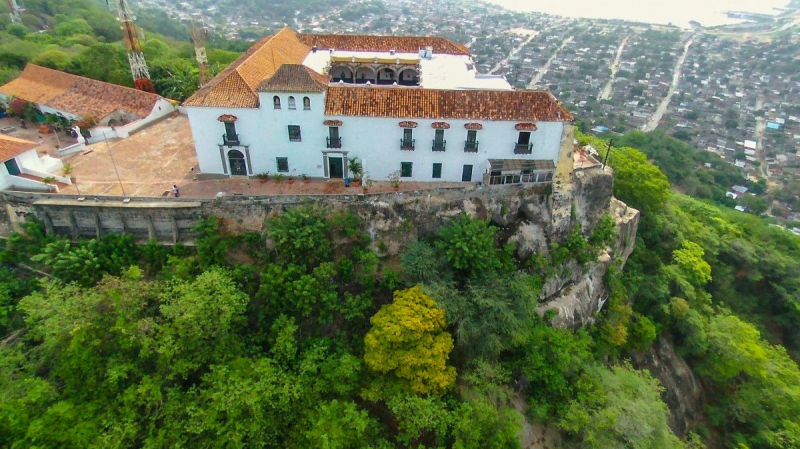
Photo: https://www.pinterest.com/ 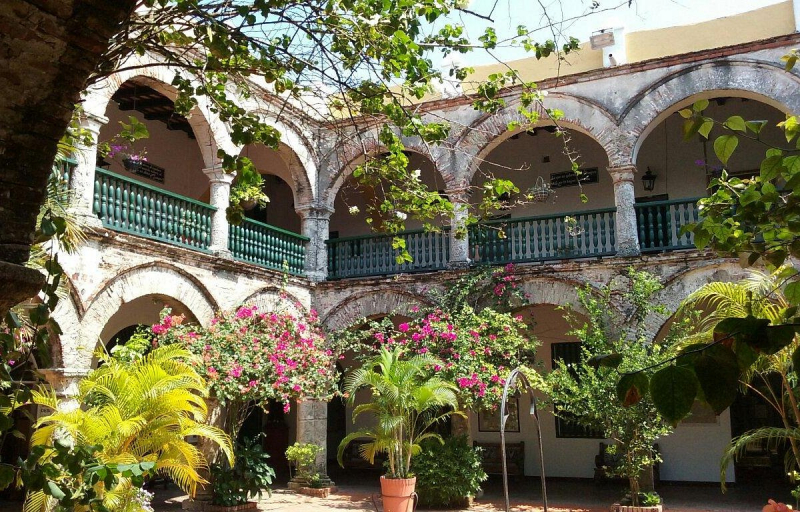
Photo: https://www.tripadvisor.com/































